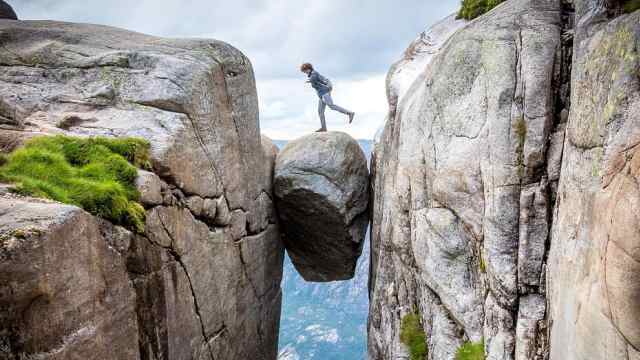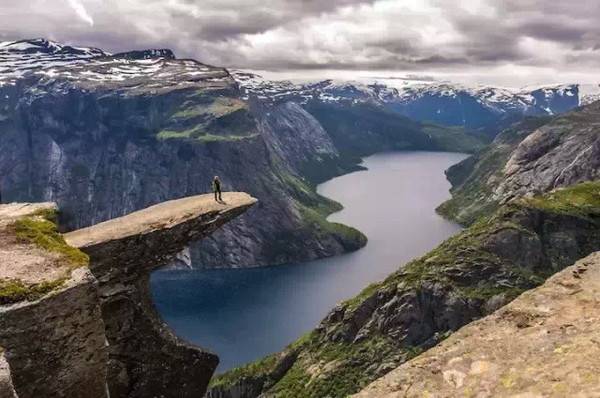Preikestolen
"The Pulpit Rock of God"! A relic of the Ice Age, it has been rated by CNN as the most magnificent natural landscape in the world. It rises abruptly from the bright waters of the Lysefjord, as if naturally formed! Due to its steep and upright position above the fjord, the terrain is high and open, often accompanied by strong winds. At such times, it takes great courage to stand at the edge and enjoy the view. Some people don't even dare to stand up; they sit or even crawl forward. Regardless of the method, those who dare to approach the edge of the rock, even by crawling, show a commendable respect for nature.
Kjeragbolten
A masterpiece of nature, a conquest for the brave. As one of Norway's most famous tourist attractions, this 5-cubic-meter boulder is wedged in a crevice at the top of Kjerag Mountain in Norway, about 1000 meters above the valley floor. 'Kjeragbolten' is also known as the 'Stone of the Brave.' If you have the courage to climb onto Kjeragbolten, you will be rewarded with an unparalleled view of the valley below. However, for the faint-hearted travelers, it is necessary to remind them 'not to look down,' as a moment of weakness might mean bidding farewell to this world.
Trolltunga
A true temptation of the tongue, difficult to reach but absolutely breathtaking. Trolltunga is a massive rock that juts out horizontally over 1000 meters above sea level, known as the Pulpit Rock of Hardanger, with an imposing presence. Norway is famously symbolized by trolls, and this flat, elongated rock protruding from the cliff in the mountains resembles a troll's tongue extending high above the lake, making one's heart race at the sight, hence the name. This hiking trail is of high difficulty and is not suitable for the elderly or children.









